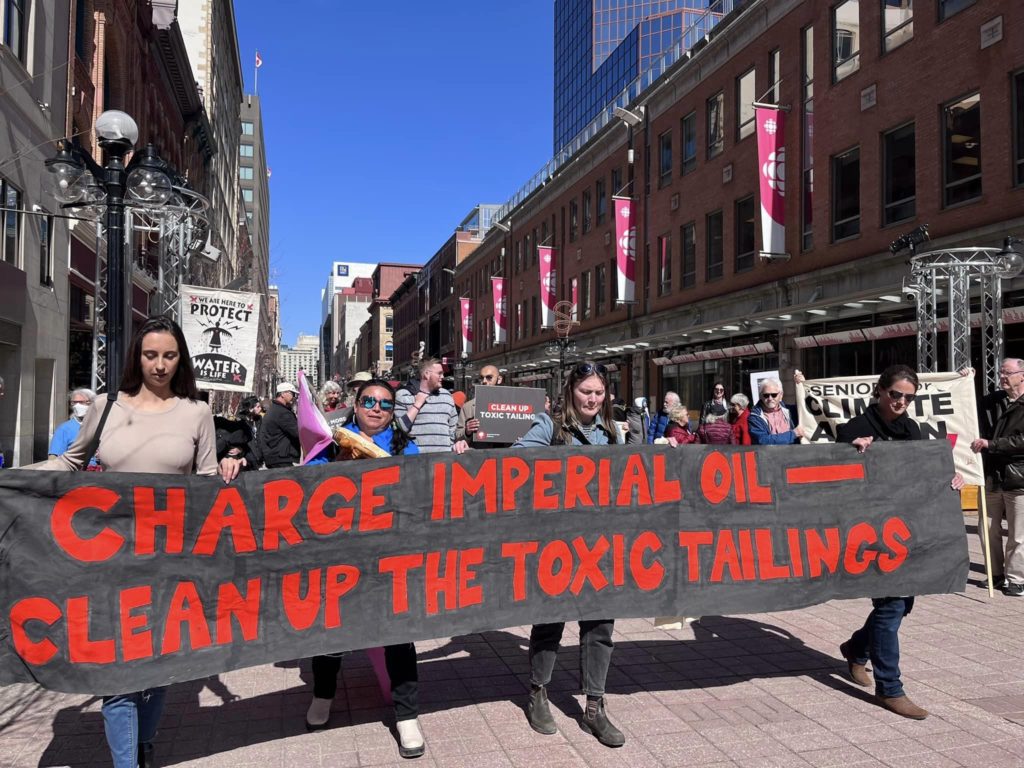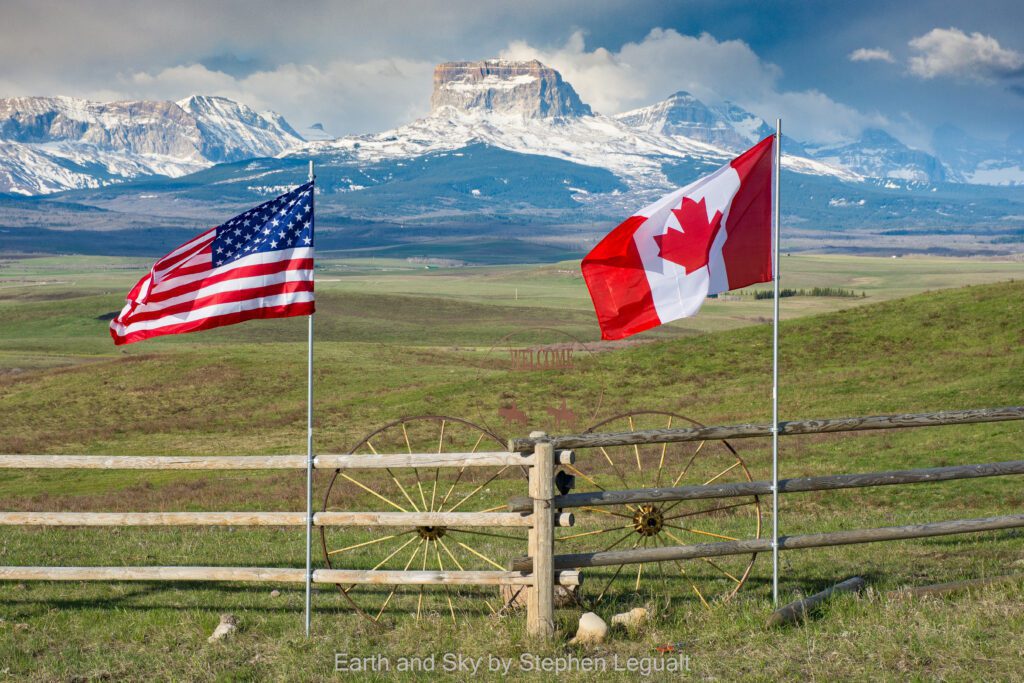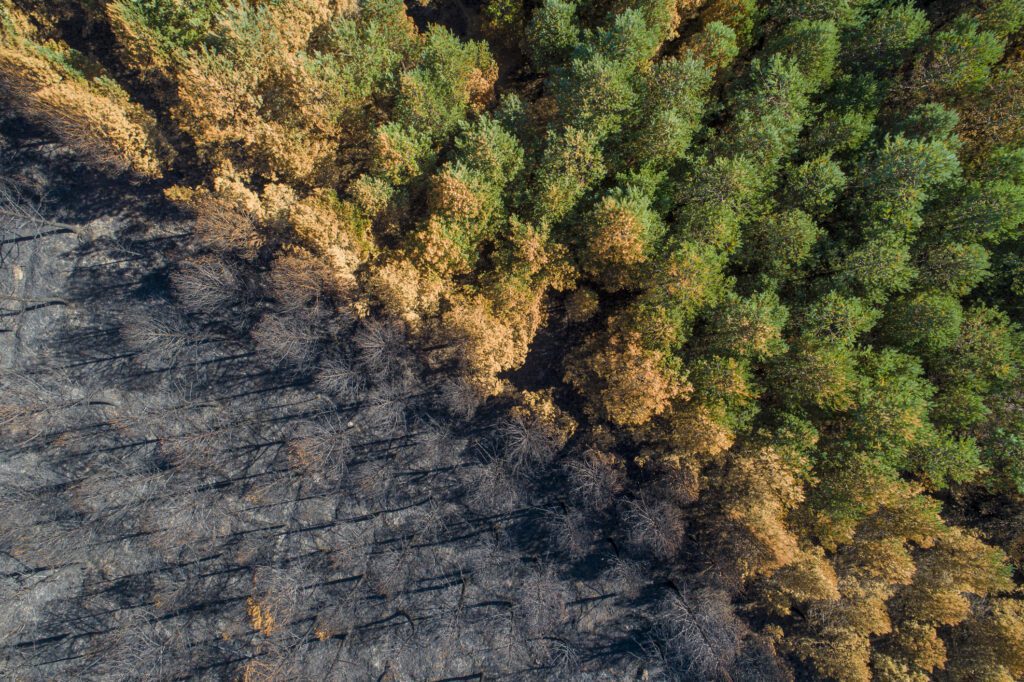A disastrous toxic spill in the tar sands
In February 2023, 5.3 million litres of toxic industrial wastewater known as tailings spilled from Imperial Oil’s Kearl mine in the tar sands into the surrounding environment. Local Indigenous communities rely on the land and water for sustenance and cultural practices.
Tar sands tailings “ponds,” store over 1.4 trillion litres of toxic wastewater from oil production. They contain mixtures of dangerous chemicals such as mercury, benzene, arsenic and naphthenic acids. The tailings have grown out of control, sprawling over 300 square kilometres, enough to cover the city of Vancouver 2.6 times, and there are no credible plans to clean them up.
The Imperial Oil disaster highlights the ongoing failure of oil companies to responsibly manage their waste and the danger it poses to ecosystems and human health.
Here’s what we have learned since February:
Indigenous communities were kept in the dark for over 9 months
Following the Imperial disaster, the Alberta Energy Regulator issued a public notice on its website, which also mentioned that separate tailings at the same facility had been leaking toxic waste for at least 9 months.
This was the first time local Indigenous nations, the federal government, the Northwest Territories government and the public were informed about the ongoing leak and the spill. The Alberta Energy Regulator and Imperial Oil did not notify the Indigenous nations whose territories the Kearl mine is on, nor any other Indigenous nation living downstream, despite regularly discussing the disaster with each other behind closed doors.
Trust is broken
Indigenous nations, whose territories the spill occurred on and who rely on local food sources and water, were kept in the dark about the leak for nine months. This includes members of the Mikisew Cree, the Athabasca Chipewyan and Fort McKay First Nations, the Fort Chipewyan Metis, and other downstream communities – all the way to the Northwest Territories. This means the community harvested meat, berries and other medicines from the territory unaware of the risk of contamination. These communities already experience higher-than-expected rates of cancer of the blood, lymphatic system, biliary tract, and soft tissue which the community and local physicians associate with the contamination coming from the tar sands operations.
Many community members had to discard the food they had harvested due to the risks of contamination. They also voiced their concerns about the game they had already consumed and the safety of their drinking water.
Brad Corson, Imperial Oil’s CEO, was mostly sorry he got caught
Following a month of public outcry about the toxic spill and leak from Imperial’s Oil Kearl mine, Imperial Oil’s CEO, Brad Corson (the highest-paid energy CEO in Canada in 2022), and the Alberta Energy Regulator’s CEO, Laurie Pushor, were called to answer questions by federal Members of Parliament.
At the hearings, Corson apologized profusely for what he called a “communication breakdown,” and attempted to shift part of the blame onto the staff of Indigenous Nations. He attempted to frame this leak and cover-up as a one-time mistake and avoided taking responsibility for the fact that Imperial Oil continues to store billions of litres of toxic waste in tailings ponds that were designed to leak.
Indigenous nations impacted by the disaster also testified, highlighting the decades of environmental racism and violations of their treaty and inherent rights in Northern Alberta.
No federal or provincial charges have been laid against Imperial Oil
In response, Indigenous and environmental groups sent a letter to the federal and Alberta governments, calling for accountability for the disaster, including an overhaul of the Alberta Energy Regulator, and federal charges under the Fisheries Act. In May, the federal government announced it was opening an investigation into the incidents, but no further details have been provided since.


The Imperial Oil leak and cover-up were not a mistake; they were a direct result of the broken regulatory system in Alberta.
The Alberta Energy Regulator (AER) is meant to oversee energy development in the province through regulations, permits and environmental monitoring to “protect public safety and the environment”. However, the AER has refused to admit to any wrongdoing in hiding a massive toxic leak from impacted communities and the public. Recently, the Alberta Energy Regulator released the results of an external review regarding its handling of the Imperial Oil incidents. The review concluded that “the AER followed the existing policies, standards, procedures, and/or processes,” even though it did not notify Indigenous nations of the incident for nine months, leaving them unaware of the risks of consuming water and game harvested in the area.
This is further evidence that the AER is designed to protect industry, even if it means endangering the public and local communities.
What’s next?
Imperial Oil and the Alberta Energy Regulator are set to testify in Parliament by the end of this month (November). Members of Parliament (MPs) must seek answers to the following questions:
- Has Imperial stopped the leak? How many other Imperial Oil tailings are currently seeping?
- What is the total volume of leaked toxic waste from all oil sands companies, including Suncor?
- What policy changes are the AER implementing to prevent future incidents?
- Have those involved in the Imperial Oil cover-up faced consequences internally?
The Imperial leak is only the tip of the iceberg. All companies leaking toxic waste in violation of federal and provincial environmental laws must be charged. Finally, while it is critical to come up with a long-term cleanup plan for tailings, the immediate next step is to stop the growth of tailings. We cannot allow this problem to get worse with no end in sight.









